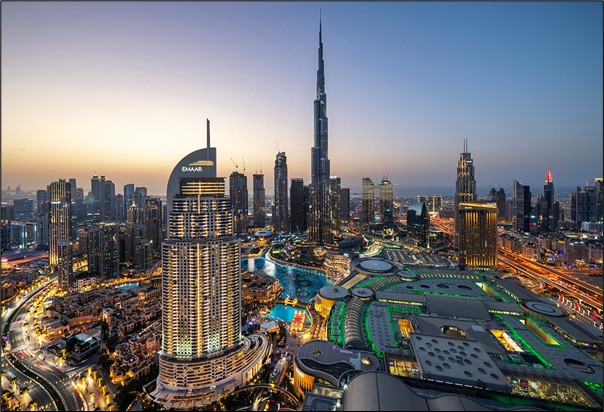Did you know that Nizwa was the former capital of Oman, well before Muscat? An ancient city in the interior, Nizwa sits on a plain characterised by seasonal rivers and palm plantations. The city’s Falaj Daris, Oman’s largest water source and a UNESCO site, is situated at the crossroads of age-old trade routes. Known as The Pearl of Islam, Nizwa served as the capital of Oman under the Julanda dynasty in the sixth and seventh centuries. Around a millennium later, in 1668, the Nizwa fort became the administrative seat of authority for presiding Imams. The adjoining marketplace, Nizwa Souq, is never shy of handicrafts and silversmiths. Come join us in a discovery of Nizwa, with fascinating insights by Oman’s Ministry of Tourism.
Speaker: Ms Asma Salim Hamoud Al Hajry, Oman’s Ministry of Tourism
Ms Asma Salim Hamoud Al Hajry is the Deputy Director-General of Tourism, Marketing and Promotion at Oman’s Ministry of Tourism. Besides supervising the sultanate’s relations with international markets ranging from European offices to those in Australia and New Zealand, Ms Al Hajry is tasked with reviewing budgetary and media plans in line with Oman’s Vision 2040. She received her MSc in marketing for places and tourism from the University of Leicester and her BA in business studies from Stirling University.
Listen to the full event here:
Watch the full event here:
A summary of Session 10’s proceedings can be found below.
Bridging the Gulf Episode 10 — MEI Salon Cultural Segment II: A City as Old as Time: Nizwa, Oman
By Ilyas Salim, Research Assistant, Middle East Institute, National University of Singapore
Sitting on the Southeastern Arabian part of the Arabian Peninsula and spanning an area of 309,500 square kilometres, Oman shares borders with Yemen, Saudi Arabia, and the UAE. The country is divided into eleven governates, with the city of Muscat as its capital.
Oman is known for its nature and landscape. From June to September, the country is visited by its unique Khareef monsoon season, during which areas near towns such as Salalah are transformed into lush green mountains. Oman is marked by a variety of climates and temperatures and its terrain contains deserts, beaches, water springs, caves, geological sites and nature reserves. Popular outdoor activities include camping, dune bashing, kayaking, jet skiing, canyoning and mountain biking. Tourists also visit the country to stake out and observe whales, dolphins, turtles and birds. One can get to Oman by air, land and even a cruise ship. Transportation within Oman itself is convenient and there are plenty of international hotel chains as well as budget options for accommodation.
Oman is also particularly well-known for its heritage and culture. There are more than 1,000 forts and castles in the country, all of which have been preserved and restored for tourists to experience. The National Museum of Oman was opened in 2015, with 14 galleries displaying a sweeping overview of the country’s vibrant history. Oman is also steeped in Islamic architecture, with the Sultan Qaboos Grand Mosque being one of the highlights in Muscat. The mosque possesses the second largest handwoven carpe, weighing almost 21 tons, as well as the largest Swarovski crystal chandelier in the world weighing almost eight tons. The Royal Opera House in Muscat, which opened in 2011, was commissioned by the late Sultan Qaboos bin Said Al Said who loved arts and classical music. Oman is famous for its shipbuilders and sailors and is home to several UNESCO world heritage sites, including the ancient city of Qalhat, the Aflaj irrigation systems and the Frankincense Trail.
The city of Nizwa is the pre-eminent city in Oman. Located around 140 kilometres from Muscat, it is one of the oldest cities in the country and has archeological sites dating back to the Bronze Age. It was historically seen as a stronghold of Islamic religion and culture due to its scholars. Nizwa is celebrated for its Souq (marketplace), where crowds flock to buy cattle, meat, vegetables, fruit and handicrafts. Nizwa is also home to the ancient Falaj Daris irrigation system, an ancient network of water channels spanning eight kilometres and covering 1,700,000 square metres, that makes use of gravity and gradients to move the area’s water from its underground source.
There are numerous historical villages and settlements in Oman. The Al-Aqr village, one of the oldest in the world, dates 1,400 years back to the first century of the Islamic calendar and also contained one of the oldest mosques in the country. The A’Sibani village, a 30minutes walk away from Nizwa, comprises of two-storey mud brick houses and dates back to the 17th century. The Bait Al Radiah castle is located between the Birk Al Mouz settlement and the Fall Khatmain irrigation system and was historically built to guard this crucial water source. Today, the castle is known for its excellent collection of Omani guns and rifles, which includes several Martini Henry rifles adorned with silver embellishments. There are also several ancient mosques in Nizwa, with the Sa’al mosque being one of the oldest and largest in the country.
Visitors to Oman can observe a wide variety of vibrant cultural practices. Folk dances are often performed in many of the country’s historical forts. Oman is renowned for its handicraft industry, with a dazzling display of unique Omani khanjar — daggers — on display in the Nizwa marketplace. A visit to Oman would not be complete without sampling helwa, a local confectionary made from caramelised sugar, rosewater saffron, butter and cardamom. Towards the end of April every year, roses are collected by locals and subjected to a traditional process to produce rosewater. For farmers, summertime also means the coming of the Al Tabseel season, during which they would process, boil and dry harvested yellow Al Mabsily dates. Relatives and friends are then invited to participate in the final process of
Al Tabseel, which involves collecting, cleaning and packing the dry dates.





